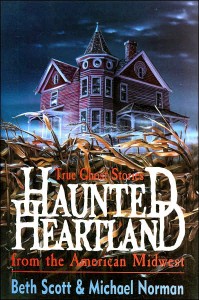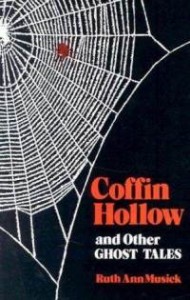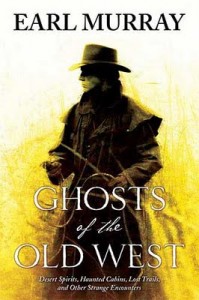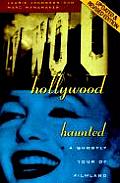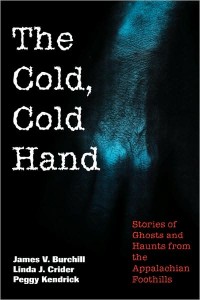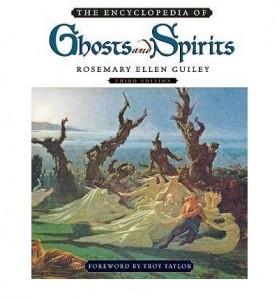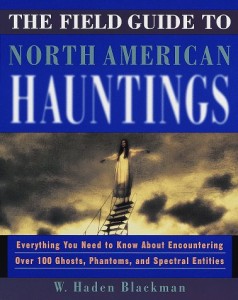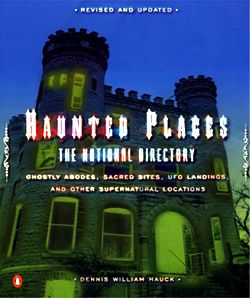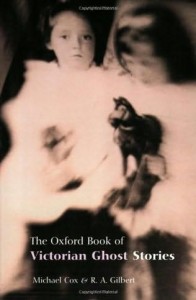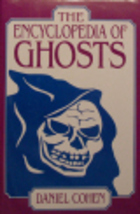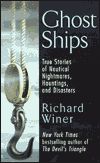The Field Guide To North American Hauntings, by W. Haden Blackman (Three Rivers Press, 1998)
The Cold, Cold Hand, edited by James Burchill, Linda Crider and Peggy Kendrick (Rutledge Hill Press, 1997)
The Encyclopedia of Ghosts, by Daniel Cohen (Avon, 1984)
Victorian Ghost Stories, by Michael Cox and R.A. Gilbert (Oxford University Press, 1992)
The Encyclopedia of Ghosts and Spirits, edited by Rosemary Ellen Guiley (Facts On File, 1992)
Haunted Places: The National Directory, by Dennis William Hauck (Penguin, 1996)
The Ghosts That Walk In Washington, by Hans Holzer (Ballantine, 1974)
Hollywood Haunted, by Laurie Jacobson and Marc Wanamaker (Angel City Press, 1999)
Haunted Hotels, by Robin Mead (Rutledge Hill Press, 1995)
Ghosts of the Old West, by Earl Murray (Tor, 1998)
Coffin Hollow and Other Ghost Tales, by Ruth Ann Musick (University Press of Kentucky, 1977)
Haunted Heartland, by Beth Scott and Michael Norman (Warner Books, 1985)
Ghost Ships, by Richard Winer (Berkley, 2000)
I’m not planning to sleep tonight. My wife has to work this godawful graveyard shift, and I’m at the point where it’s hard to fall asleep without her there for company. Pathetic, huh? I like to call it romantic. Anyhow, since sleep’s not really an option, I decided that I’d tackle a Herculean task, and write up one massive review of every ghost book I could find lying around my newly-cleaned basement-office.
When I turned up thirteen books in total, I knew it had to be a sign.
I suggest you dim the lights, put on something warm to drink, check the windows, and settle in with me. This may take a while.
For ease and convenience, I’ve taken the liberty of dividing the collection up into several subcategories. You have the books of ghost stories and tales, the straight encyclopedia references, and the ones that are more reference or travelogues. Let’s start with the encyclopedias, before moving on to the really good stuff, shall we?
I’ve already talked about the fascination we have with ghosts and hauntings in a previous article, so I don’t need to lecture on that overmuch this time around. Suffice it to say, we’re morbidly fascinated with ghosts stories. They serve as explanation, cautionary fable, spooky entertainment, and a whole host of other purposes.
Whether we’re approaching ghosts from the deadly serious (Poltergeist) to the morbidly comic (Ghostbusters) to the romantic (Ghost) to the fantastic (Chinese Ghost Story), we’re doing so from a position of ignorance. The best we can do is make up stories, and try to attach meanings to that which we don’t fully understand.
Hence these books. Some of them look at ghosts and hauntings from a tourist point of view, some merely catalogue the supernatural, and some treat them as the next best thing to fiction. Nothing in these books is true, unless you want it to be. On with the show.
Rosemary Ellen Guiney’s *The Encyclopedia of Ghosts and Spirits is an oversized book which approaches the ghostly phenomenon from a purely referential point of view. Over 400 entries cover the gamut, including specific ghosts, people associated with the field, places known for hauntings, and specific events likewise associated with the paranormal. This book is very good for looking up beliefs, lores, and superstitions regarding hauntings and the afterlife, and its documentation regarding famous researchers, writers, psychics, mediums and the like is extensive. Written in an accessible yet scholarly manner, this book manages to cover the subject fairly well, and fits into a niche that most of the other books in my collection do not. With entries on Abraham Lincoln, James Dean’s supposedly-cursed car, Hull House, Egyptian and Native American beliefs, and much more, it’s both entertaining and informative. It treats the subject with dignity and objectivity, and is highly recommended for anyone needing an entry-level ghost/paranormal reference manual. Points as well for the helpful index, the numerous illustrations and photographs, and the further reading recommendations after every entry.
On the other hand, we have Daniel Cohen’s *Encyclopedia of Ghosts, which is a lot more sensational, going by the cover copy (which proclaims it to be comprehensive, authoritive, fascinating, and bizarre.) It’s set up as more of a popular book, its numerous entries divided into sections including Poltergeists, Animal Hauntings, Classic Cases, and Ghostly Legends. It’s not so much an encyclopedia as it is a compendium of stories, ranging from ghosts of the famous to urban-style legends. A section of black and white photos adds a little variety into the mix, but otherwise it’s your typical paperback. Where its strengths lie are in the variety of ghost stories told, and in the clarity of its writing. This is a good casual read, set up so you can read a few at a time if you so desire. It may not send shivers up your spine, but it’ll definitely enlighten and entertain. This book also comes recommended, due to the overall usefulness and quality. However, it doesn’t stand out overall. It’s worth a look, but it’s exactly what it aspires to be: a supermarket book.
Next on our tour, as we begin a look at ghosts books dealing with specific areas, is Robin Mead’s *Haunted Hotels. You can guess what the subject matter of this one is. That’s right, it’s billed as a “guide to American and Canadian inns and their ghosts.” This is the book for those of you with some extra money and vacation time, and the desire to sleep in a genuine haunted hotel. (Poltergeists are extra.)
The introduction states, however, that “This is not a book for or from the lunatic fringe. It is, first and foremost, a hotel guide.” So with that caveat in mind, it proceeds to dish up a generous serving of hotels and inns which come with a little extra. Over one hundred hotels, covering 27 states and Canada, are listed, complete with address and phone number. You won’t find detailed, complex ghost stories recounted here, however. Just the facts, ma’am. Each hotel listing is made up of the regular listing, which gives brief details about history and setting, and the ghost listing, which details what sort of legend or haunt one will find associated with the hotel. For instance, take the Martha Washington Inn, in Abingdon, VA. The listing covers the basics, like location, history, what makes it unique, and so forth. Then it talks about “Beth,” the resident ghost, supposedly a young woman who was a student at Martha Washington College during the Civil War. There’s also the ghost of a Confederate soldier who died for love, and a ghostly riderless horse. Frankly, this book is a treat, just for something different and amusing. Possibly even intriguing. If you like your vacations with a little spook and shiver, consider using *Haunted Hotels to plan your stay.
While you’re at it, you might consider a copy of Blackman’s *Field Guide to North American Hauntings, which I guess is sort of like bird-watching, but with the paranormal. (Red-bellied sapsucker, check. Jewel-crested hummingbird, check. Free-roaming full-torso vapor, check. Transluscent riderless horse, check.) Seriously, folks. This is another interesting reference work. Its chapters include True Haunted Houses (Hull House, Amityville, Winchester Mystery House),
Haunted Vessels (USS Constellation, Queen Mary, Hanger 43), Haunted Cemetaries, Natural Haunts (Niagara Falls, Devil’s Tower), Other Haunted Sites (Highway 666, Alcatraz) and Ghost Hunting. And let me admit now that this book sends shivers up my spine. I can’t say exactly why, except that it presents the intrusion of the supernatural into the rational world with such seriousness and professionalism that one finds it hard to disbelieve, especially at night. It takes the subject matter seriously, assuming that you’re really planning to go hunting for ghosts. The typical entry includes data on Location, Number of Ghostly Residents, Identities of the same, Type of Activity, Demeanor of said residents, and the likelihood of encountering the ghosts. As I said, this is serious stuff. Approach at your own risk, and –do- avoid Highway 666. This is a good read, but I’ll trust you to follow your own judgment where actively seeking these ghosts out is concerned.
For something a little friendlier, consider *Hollywood Haunted. As the title suggests, this book is primarily concerned with the people who couldn’t leave Hollywood, even after death, and the places they gravitate towards. The first chapter covers certain ghostly superstars, like Clifton Webb and Sharon Tate. Next is a lengthy list of paranormal hot spots, such as Hollywood and Vine, Lucille Ball’s home, Madonna’s Castillo Del Lago, and the Four Oaks Restaurant. Finally, haunted studios, theaters, and hotels. This really is, as the cover says, a ghostly tour of filmland, never forgetting what makes Hollywood different from the rest of reality. Well-written, with numerous photos, it’s a nice treatment of ghosts in Hollywood. Of course, it helps if you like the subject matter. It’s not as thorough or detailed as some ghost books, but it’s high on the quality chart.
*Haunted Places is another travelogue-style book, with hundreds of entries arranged alphabetically by state, covering all fifty of the United States, plus bibliography and index. The cover bills this as covering “ghostly abodes, sacred sites, UFO landings, and other supernatural locations,” so be advised that it deals with a wide variety of paranormal and unexplained occurrences within the boundaries of the United States. But with over 2,000 such listings, it’s easy to find somewhere close to you. For instance, there’s two haunted locations in my general vicinity. On the other hand, this book is apt to wander a bit, so that you’ll find haunted houses on the same pages as “vortexes of psychic energy” and supposed UFO landing sites. A bit on the dry side, it makes a nice reference book or travel guide, but fairly dull bedtime reading. I enjoyed reading this book, but it’s definitely not as exciting as some of the offerings on my list. Your mileage may vary. Highly recommended as a reference book, less so if you’re looking for ghost stories themselves.
Along these same lines, we come to a curious little book. *The Ghosts That Walk In Washington. Yes, it’s the ghosts of Washington, DC. Professor Hans Holzer undertook a serious study of the spirits and legends of Washington, and came back with an extensive list of oddities and mysteries. It covers the Kennedys, Woodrow Wilson, Lincoln and the White House, and a number of other areas that have enjoyed visits from beyond. It tackles the subject matter from a parapsychologist’s point of view, treating the ghosts as psychic phenomena for the most part. As the author says, “[this book] is the report of the psychic investigator, corroborated and authenticated whenever that was possible.” It’s an oddity, and of such an age that you’d best look for copies in the used book stories if you must have it. It’s well-written, but definitely not as good as it could be.
*Haunted Heartland is more like it. Covering the states of Illinois, Ohio, Nebraska, Wisconsin, Iowa, Kansas, Michigan, Minnesota, Missouri, and Indiana, this book recounts dozens, if not hundreds of ghostly happenings, hauntings, and encounters. Retold for a more popular and accessible point of view, it’s a very nice collection of ghost stories with a regional feel to it. I can admit that there were times when it made me look around just to be on the safe side. Read this book, and believe that there –are- things out there that can’t be easily explained away. It contains the wide variety of stories, going beyond the basic fare. Vanishing people, ghostly ships, premonitions and precognitive visions, places trapped in time, and so forth. I’d go into more details, but frankly, I’m not sure I need to feed my imagination much more at the moment.
Instead, I’ll move right along, back in time to the Victorian era, which ought to be safer. *Victorian Ghost Stories is essentially an offering from the popular Oxford Book series, and is a collection of classic ghost tales dating from 1852 (The Old Nurse’s Story, by Elizabeth Gaskell) to 1908 (The Kit-bag, by Algernon Blackwood.)
Frankly, it’s a rather mixed bag. First, you have to like Victorian-era stories, and second, you have to accept that not everything will suit one’s tastes. While crowd-pleasers like Jerome K. Jerome and Rudyard Kipling make appearances, there’s a number of less-remembered authors as well. My opinion? It’s pretty good overall, but I haven’t managed to read more than about half of the stories within. I’m afraid that I’m a child of the modern era, and I have trouble adjusting to the writing styles of the Victorian years. What I have read, however, suggests that there are some true gems buried within. Henry James, George Macdonald, Robert Louis Stevenson, and Arthur Conan Doyle all have selections in this book. This is pure fiction, unlike many of the other books I’ve covered so far in my retrospective, but it stems from the same basic desire to explain and entertain. Feel free to give this one a glance with a clear conscience.
From Victorian to Western, we’re covering a wide range of genres and locations tonight. The next book on my list is Earl Murray’s *Ghosts of the Old West, a recent release from Tor, and the latest in a long series of books by Murray. He bases his interest in the supernatural in a ghostly experience of his own from 1970, thus giving the book something of a “believer” slant to it. He’s thus collected two dozen stories of hauntings and supernatural occurrences based in, inspired by, or related to the mystique of the Old West. Thus, we’re treated to stories about old forts and battlefields (such as the multiple phantoms of Fort Laramie, Reno Crossing, and Hat Creek), hotels and mansions (starting with the famous Winchester Mystery House, and going on to speak of Chico Hot Springs, the Lost Trail Hotel, the Sheridan Inn and more), old trails and ghost towns (especially the ghost town of Old Garnet, and Sinks of Dove Creek, where laborers worked on the trans-continental railroad), and finally a chapter on Native American spiritualism. Murray does quite well at expressing the restless nature of the Old West’s memories, and the unnerving aspect of its ghosts. It’s a well-written book, with just enough spook to it to help you envision the phantoms he describes. All of the stories in this book are based on truth, though in some cases the names have been changed by request. This is certainly a great representative of the vast unexplained nature of the Old West, a time of restlessness, adventure, and hardship, full of later legends. I thoroughly enjoyed reading this book, and once again, I’d have to recommend it if your tastes swing towards the Old West. (And if you like that, I also recommend Midori Snyder’s novel, *The Flight of Michael McBride, also from Tor.)
Heading Eastwards, we come to *The Cold, Cold Hand, Stories of Ghosts and Haunts From The Appalachian Foothills. This is definitely less of a scholarly effort and more of the traditional folklore/storytelling vein. As such, it places great detail on the lurid nature of the events leading up to, and describing such apparitions. It collects the stories right from the mouths of the tellers, ranging from teenagers who’ve held séances to elderly women recounting what happened ‘long ago’. This is the sort of book you read aloud at night to terrify your friends. There’s not much else I can say about it, except that the name is self-explanatory, and the stories are, for the most part, quite well-done. This is a superior book, a good example of what a book of folktales or ghost stories should be. There’s always been a strong sense of mystique about the Appalachian communities, the feeling that anything goes when no one’s watching, and these stories help to reinforce that sense of the unreal. Definitely give this one a shot if folktales and ghost stories are your interest.
Still remaining in the haunted hills of Appalachia, but focusing more on West Virginia, we come to *Coffin Hollow and Other Ghost Tales.
You’ve guessed it, friends. Faces in the window, dogs that vanish in the light, mysterious hitchhikers, perpetually wandering lovers, premonitions, and the usual staples of haunting are retold here in ninety-six spooky stories. Sadly, they range from eerie to bland, and most are brief and to the point. These tales have been collected from assorted tellers, and not all can do justice to the material. It’s a fine collection, but nothing extraordinary. What sets it out from the others, however, is a section of notes in the back. Each story has a listing, including the source (with story teller, date, and location), and the particular motif evoked by the story. These include E234.4: Ghost an unjustly executed man, E281: ghosts haunt house, E231.1: Ghost tells name of murderer, E610: Reincarnation as animal, E332.3.3.1: The vanishing hitchhiker, E363: Ghost returns to help living, and so forth. Thus, despite the sometimes-disappointing nature of the retellings, this book makes up for it in other ways. As a folklorist’s reference, it’s a treasure. The introduction is also worth a look, as William Jansen of the University of Kentucky explains why some stories seem ‘too polished’ while others are too bland: Simply put, the students aiding Dr. Ruth Ann Musick in collecting and transcribing the stories ignored much of the ‘voice’ of the teller in favor of writing the stories down in a literary manner. This book’s great for the folklorists and casual readers, but lacks on the “edge” that good ghost stories should have.
Our final offering of the night is *Ghost Ships, which bills itself as “true stories of nautical nightmares, hauntings, and disasters.” Thirty-three chapters detail dozens of bizarre happenings related to the sea, which is unquestionably a realm of inexplicable events, mysterious disappearances, freak occurrences, and great tragedies. This book reminds us that we’ll never master the oceans, nor will we understand them. The vast depths are littered with broken vessels and drowned sailors, victims of freak storms and human error. Unnamed creatures swim where the light never reaches, and the world takes on a whole new aspect when you’re a thousand miles from land. From the Coast Guard’s encounters with sinister fog banks, to crewless ships to cursed vessels to floating coffins to freak meteorological events to islands of death, the stories in *Ghost Ships fully detail the stranger nature of the seas. Richard Winer has done his homework, and knows his nautical world well, and conveys it in his writing. Not only are these stories bone-chilling, they’re evocative and thorough. An expert on the phenomena surrounding the Bermuda Triangle, he’s applied his talents towards the less-known and even stranger things that go on at sea. Thus, this book is highly recommended. It’s whetted my appetite for more of the same.
Thirteen books, covering a variety of aspects of ghosts, hauntings, and supernatural phenomena. We’ve seen regional books on the Old West, Appalachia, the sea, and Washington, DC. We’ve looked at haunted hotels, haunted Hollywood, and haunted places in general. I’ve shown you encyclopedias and references, and books of pure stories. Still, we’ve barely scratched the surface, for everywhere and everyone has a ghost story to be told. I hope I’ve enlightened, and given you something to look for the next time you’re in the mood to consider what lies beyond the shores of rational thought.
Enjoy, and sweet dreams. If something visits you in the night, don’t be –too- afraid. And don’t be too nervous when the door slams, the window opens, or the pictures fall off the walls. Maybe there’s a rational explanation.
Or maybe not.

